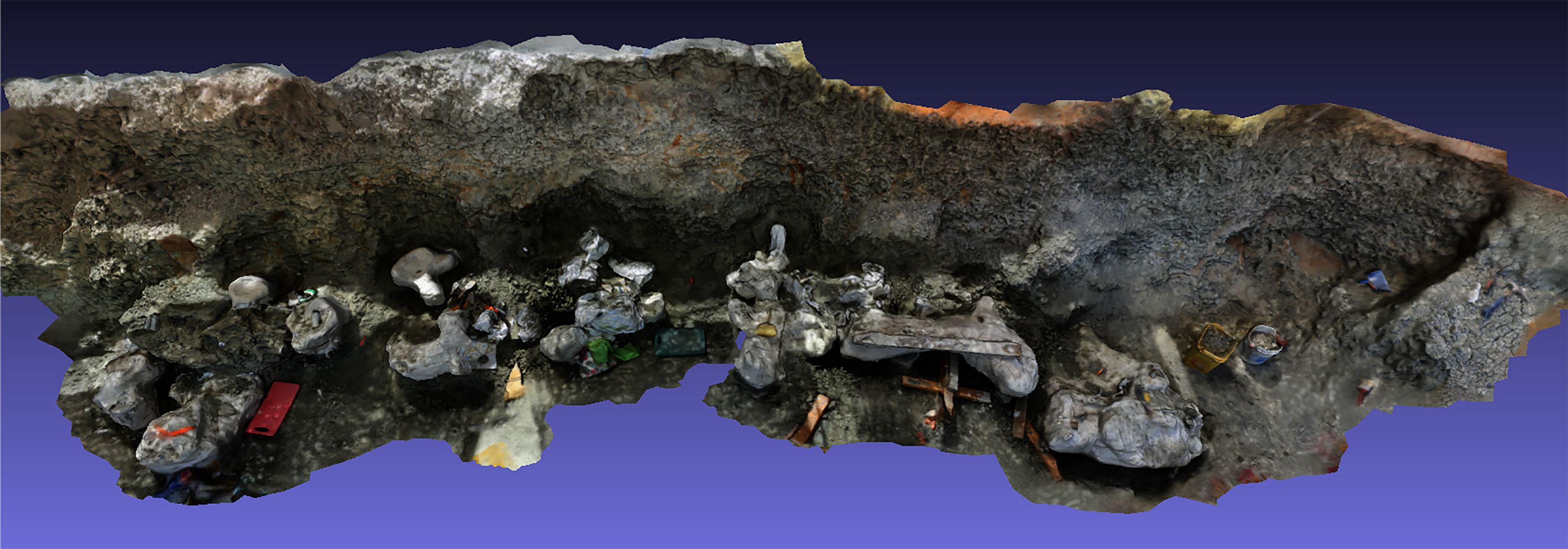
Today, Tate paleontologists in the field sometimes create 3D models of the skeleton remains as a visual aid to quarry mapping. This helps to save a trip to the site location, since it can be referenced in the office on the computer. The 3D version is also beneficial since it may show the jacket numbers more clearly for creating a 2D map graphic of the quarry. We do this by taking a stillframe of the 3D view in the 3D Meshlab application from a topview perspective and then in Adobe Photoshop we outline the bones and number them for the quarry map.
These days, you don't need special equipment to take these source photos for the 3D model. For portability in the field, the Tate Museum has used an Apple IPad Pro and other participants in the excavation have used a 3D digitisation application on their Apple cell phones. I take still pictures on my camera (source photos) and process them offsite on my laptop. Back when Muffin was removed from the site, we did not do much 3D in the field. But it is becoming standard practice in more recent years.
